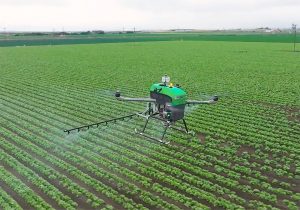1.5 | Understanding the Business Environment
Anthony Farao
Why Business Environment Matters in Agriculture:
Agribusinesses do not operate in isolation. Their success or failure is influenced by a mix of internal strategies and external conditions. These environmental factors shape decision-making, risk, opportunity, and long-term growth. For agricultural businesses, being able to anticipate, respond to, and influence their environment is critical—whether dealing with drought, a policy change, or a shift in consumer preferences.
Internal vs. External Environment:
- Internal Environment: Includes factors within the company’s control such as organizational structure, leadership style, workforce capability, and internal resources. For example, an almond processor may invest in staff training to increase efficiency during the busy harvest season.
- External Environment: Includes forces outside the organization’s direct control that impact operations, strategy, or profitability.
The Seven Key External Forces in Ag Business:

- Economic: Interest rates, inflation, and overall market conditions. Example: Rising fuel costs increase expenses for transportation and machinery.
- Political/Legal: Laws, regulations, and policies that govern labor, safety, water use, subsidies, and labeling. Example: New overtime rules may change how a farm schedules its harvest crews.
- Demographic: Shifts in population age, income levels, education, and workforce availability. Example: An aging population of farm owners may lead to generational turnover in rural communities.
- Social: Changing consumer values, food preferences, and lifestyle trends. Example: Growing demand for organic and locally sourced products reshapes marketing strategies.
- Technological: Innovations in equipment, software, biotech, and automation. Example: Drones used to monitor crop health can help reduce pesticide use and increase yields.
- Global: International trade agreements, tariffs, climate events, and supply chain disruptions. Example: A drought in South America can affect global grain prices and export demand.
- Competitive: The actions of rival businesses in the market. Example: A new hydroponic lettuce producer may undercut traditional growers by selling directly to grocery stores.
🌾 Micro Story: “Seeds of Balance”
In a small valley nestled between golden hills and clear rivers, three farmers, Elena, Raj, and Mateo, each tended their land differently.
Elena focused on social justice, ensuring that her workers were paid fairly and that women had equal opportunities in the field.
Raj prioritized the economy, tracking crop prices and ensuring his farm was profitable through smart investments and trade deals.
Mateo, a quiet observer, cared deeply for the environment, using sustainable methods that protected the soil and reduced runoff.
One year, the valley experienced a severe drought. Elena’s community remained strong, Raj’s savings supported his crew, and Mateo’s soil held moisture better than anyone expected.
The neighbors realized that no single focus could sustain agriculture on its own.
They joined forces, blending social care, economic strategy, and environmental stewardship into one unified system—growing food not just for profit, but for people and the planet.
And from that year on, the valley thrived like never before.
📘 Classroom Example: Imagine a local tomato farm. How would its operations be affected by each of these seven external forces? Would it need to adapt its labor strategy, pricing, or technology in response?
Exercises
✅ Self-Check: Which of these forces do you think most affects ag in your region? Why?Exercises
💬 Reflection Prompt: Consider your business idea for the semester project. Which 2–3 external forces are most important for your plan to address?
Internal vs. External Environment:
- Internal: Company culture, leadership, goals, employees
- External: Forces outside the business that affect performance
Seven Key External Forces:
- Economic: Inflation, interest rates, commodity pricing
- Political/Legal: Ag laws, labor policies, subsidies
- Demographic: Age, population trends, labor availability
- Social: Consumer values, lifestyle shifts (e.g., organic food trends)
- Technological: New equipment, data systems, biotechnology
- Global: Trade agreements, international competition
- Competitive: Rival farms or companies in your market
✅ Self-Check: Which of these forces do you think most affects ag in your region?
Suggested Visuals:
- Wheel diagram: Seven External Forces in Ag Business
- Example photo: Farm with solar panels and weather sensors (tech + environment)
Media Attributions
- Guardian-Ag-spray-drone-screencap2-1200
- 7 External Factors affecting agricutlure
- ChatGPT Image Jul 4, 2025, 08_45_32 AM © OpenAI. (2025). Sustainable agriculture balance illustration [AI-generated image]. Generated via ChatGPT with DALL·E. https://chat.openai.com/

![OpenAI. (2025). Sustainable agriculture balance illustration [AI-generated image]. Generated via ChatGPT with DALL·E. https://chat.openai.com/ A vibrant, semi-realistic illustration of a sunlit green valley divided into three sections to represent sustainable agriculture. On the left, diverse people of various ages and genders work together on a farm, symbolizing social equity. In the center, a tech-savvy farmer uses a tablet with floating data charts above well-organized rows of crops, representing economic sustainability. On the right, natural elements like trees, wildflowers, a rabbit, and a white bird surround a farmer with a clipboard, symbolizing environmental sustainability. Above the valley, three smiling farmers (Elena, Raj, and Mateo) stand side by side under a banner that reads: “SUSTAINABLE AGRICULTURE = BALANCE.”](https://pressbooks.whccd.edu/app/uploads/sites/29/2025/07/ChatGPT-Image-Jul-4-2025-08_45_32-AM-300x200.png)
